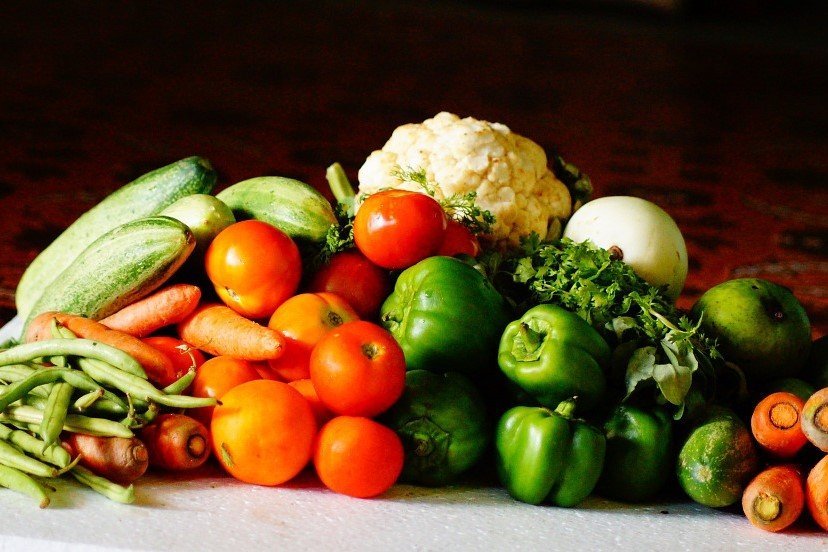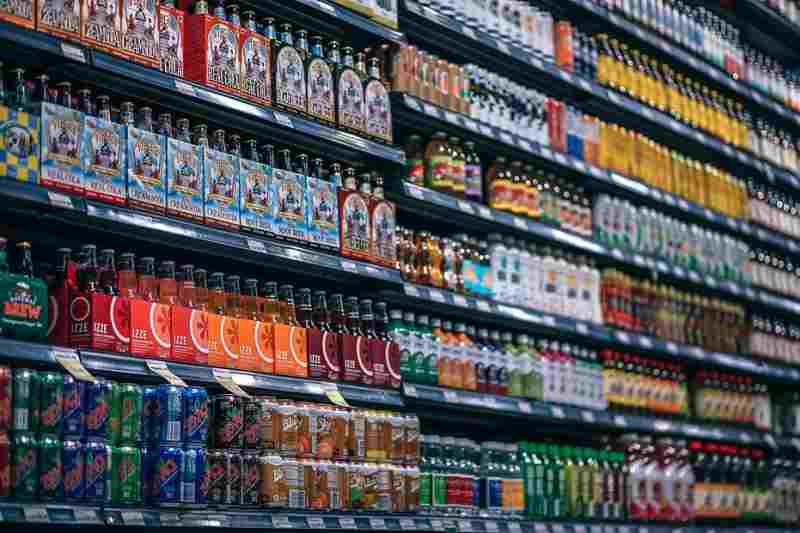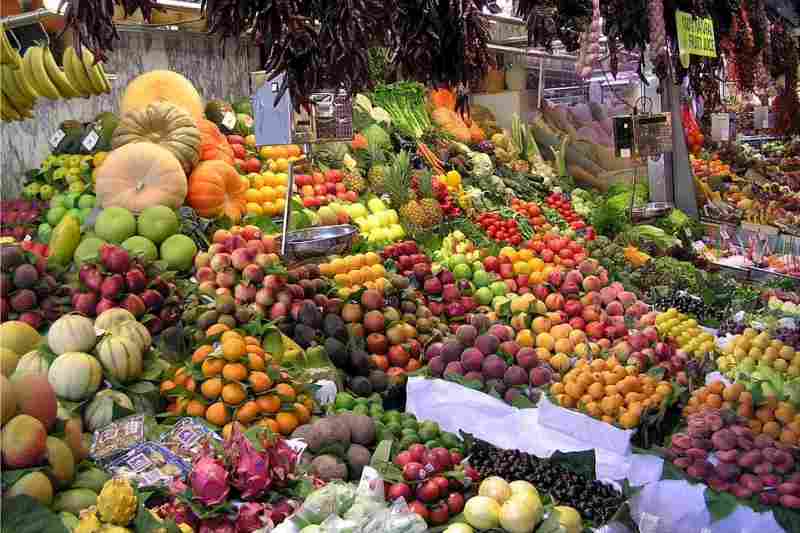Time management became lately a big word in our daily life. This goes so far, that we often do not have the time to prepare a meal from only fresh ingredients. Get a ready-made meal, chuck it in the oven or microwave and in minutes we have our dinner ready. It is convenient but considered unhealthy. Processing procedures make ready-made meals durable. And there are a lot of discussions about processed foods.
Do We Eat To Much Processed Food?
When talking about processed foods, many people think only of microwave meals and ready meals. In fact, each time we are preparing a meal from only fresh ingredients we are processing food.
The 2010 Dietary Guidelines for Americans Report, states that processed food is:

According to this definition, most of the food we eat is processed. we wash our lettuce before consumption, and we peel and cut carrots before cooking. This tells us, that processed food is not necessarily unhealthy. in fact, we need some sort of food processing to stay healthy or make the food eatable for us.
But what about the breakfast cereals out of a box, tinned vegetables, cakes, and crisps? Not to forget fast food and ready to eat meals, meat products such as bacon, sausages, and ham. And drinks such as soft drinks or milk?
Food Classification System
In fact, there are different levels of processed foods. Each level affects somehow our health. NOVA is a system, which classifies food products according to the extent and purpose of the processing they undergo.
Nova describes four food groups

Group 1 – foods that are not processed or minimally processed
In this group, Nova places minimal processed and foods that are not processed. Unprocessed foods are all edible parts of plants. Everything that comes straight out of nature and can be eaten directly. Leaves, fruits, nuts, seeds, stems, fungi, algae, as well as animal products (muscle, offal, eggs, milk), and water belong there.
Once we change food through procedures such as the removal of unwanted, or inedible parts NOVA considers this as minimally processed food. Processes such as drying, crushing, milling, filtering, roasting, cooking, pasteurizing, chilling, freezing, filling in containers, vacuum packaging or non-alcoholic fermentation also put food in this group. The aim of these techniques is to prolong the life of the unprocessed food, to conserve it. Salt, sugar oils or fats are not added to the original food during the processing.

Group 2 – Processed culinary ingredients
Processed culinary ingredients are oils, butter, sugars, and salts derived from Group 1 or nature through processes such as pressing, refining, crushing, grinding, and drying.
The aim of these methods is to produce long-lasting products that are used to prepare, season and cook foods of the 1st group, as well as to refine dishes and meals.
These processed culinary ingredients are not meant to be eaten on their own but are usually used in combination with foods of the first group.

Group 3 – Processed foods
The third NOVA group consists of processed foods. This processing is done by adding sugar, oil or salt (ie substances of group 2) to the food of group 1. In most cases, two or three Group 2 substances are used for these processed foods. Various preservative or cooking methods are used; or in the case of bread or cheese non-alcoholic fermentation. These methods have the purpose to prolong the shelf-life of Group 1 foods. Another reason is altering or refining their sensory properties. These processed foods may also contain additives. These serve to maintain their original properties or counteract microbial contamination.
In this group, we find plenty of foods that we consume daily, e.g. our fresh-baked bread from the bakery. This group of processed foods also includes vegetables, fruits, legumes, canned fish or smoked meat. Also fruits in syrup with added antioxidants or meat with added preservatives. Beer, cider, and wine are part of this classification too.

Group 4 – Ultra-processed foods
The fourth Nova group includes ultra-processed foods and also drinks. By this one understands industrially produced recipes, which consist of many different ingredients. These ingredients may consist of those that are also used in Group 3 (processed foods). Ingredients contained in ultra-processed foods alone are substances that are not commonly used in culinary preparations and additives whose purpose is to mimic sensory qualities of Group 1 or Group 2 foods or gloss over unwanted sensory qualities of the final product. Proportions of Group 1 foods are virtually non-existent or nonexistent in ultra-processed foods.
The main purpose of industrial ultra-processing is to create ready to eat or drink products that are easy and quick to prepare. The ease of handling and the time savings in our daily lives make these products attractive to us. The food industry promotes the sale of ultra-processed food with very attractive packaging and strong marketing campaigns.
Examples of ultra-processed foods
Most of us know that ready to heat and eat meals, such as pies and pasta and pizza dishes fish ‘nuggets’ and ‘sticks’, sausages, burgers, hot dogs, ‘instant’ soups, noodles, and desserts, are examples of ultra-processed food. But also carbonated drinks; sweet or tasty snacks; ice-cream, chocolate, candies as well as packaged bread and buns from mass-production; margarine and spreads; cookies, cakes, and cake mixes belong to this group. Even food we think is healthy and good for us belong in there: our breakfast ‘cereals’, the ‘energy’ bars; ‘energy’ drinks; milk drinks, ‘fruit’ yogurts and ‘fruit’ drinks; cocoa drinks. And last but not least: infant formulas, follow-on milk, other baby products.
Alcoholic drinks, such as whiskey, gin, rum, vodka, are also classified in group 4.
In ultra-processed foods, we find additives such as dyes and other colors, color stabilizers, flavors, flavor enhancers, sugarless sweeteners and processing aids, emulsifiers, sequestering agents and humectants.

Consume unprocessed and processed foods in the right proportions, avoid ultra-processed foods
As you can see now, processed foods are always on our menu. Except you feed yourself only on fresh-picked veggies, fruits or other plants from nature. It is wrong to say that all processed food is bad for us, it depends on the level of processing.
Scientific researches show that you risk your health, eating and drinking too much of Group 4 products. They have a high content of total fat, saturated fat, extra sugar, and salt but are low on fibers and vitamins.
Eating healthy means consuming a balanced and varied diet. Eat lots of fruits and vegetables. Refine those with moderate amounts of processed culinary ingredients. Consume processed food products in small amounts, and try to avoid ultra-processed foods.
Of course, it is so easy to go to the supermarket, buy a ready-made meal and let the microwave do the job. But, see it that way: cooking can be lots of fun, alone or with the partner. It can even turn out as a family event, can give you quality time. And if you cook larger quantities than actually needed for your meal you can freeze the leftovers to eat on days when there is no time for cooking.
Sources and more to read about Processed Food:
Harvard T.H. Chan School of Public Health, https://www.hsph.harvard.edu/nutritionsource/processed-foods/
The National Center for Biotechnology Information, https://www.ncbi.nlm.nih.gov/pmc/articles/PMC6410904/
Frontiers in Nutrition, https://www.frontiersin.org/articles/10.3389/fnut.2019.00085/full
The European Food Information Council, https://www.eufic.org/en/food-production/article/the-greatest-thing-since-sliced-bread-a-review-of-the-benefits-of-processed
NCBI, Ultra-Processed Foods: Definitions and Policy Issues, https://www.ncbi.nlm.nih.gov/pmc/articles/PMC6389637/

Accidently stumbled across this page. Interesting read, never thought there were that many different groups of processed food.
There sure is. And indeed, more than half of North American’s daily caloric intake is in some form ultra-processed foods.
This has a big impact on a balanced diet as ultra-processed foods have very little useful nutrients needed by the body, but lots of calories!
Eat processed foods in moderation and watch out for added sugars and sodium.